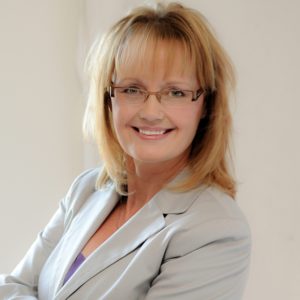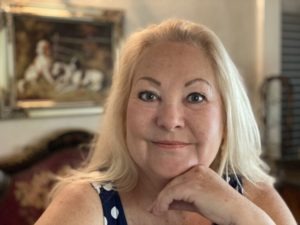EHRs beyond the hospital and doctor’s office: One assisted living community’s story
Assisted living communities are providing services for residents with more complex healthcare needs than just a few years ago. In fact, some statistics say that 50 percent of the nation’s assisted living residents have three or more chronic conditions, and 42 percent of them have Alzheimer’s disease or other forms of dementia.
A variety of market factors have led to the reality of rising acuity in these communities: the increased prevalence of seniors delaying their entry into retirement settings due to aging in place, reduced hospital stays and economic trends forcing seniors into managed care communities. As such, care providers are finding it necessary to respond with more clinically oriented staffing models, sophisticated technology solutions for medication management and a greater focus on re-aligning their business models to support higher acuity levels among their resident populations.
As acuity levels continue to rise and the assisted living industry comes under more scrutiny, government regulations will continue to change and become more complex. To that end, electronic health record (EHR) platforms have the potential to provide the tools needed to better manage regulatory changes—giving providers the peace of mind knowing that they’re in compliance.
Additionally, due to the enormous documentation requirements in these facilities, nurses must spend a vast majority of their time just documenting what they are doing—daily charting activities, progress notes, weekly and monthly medication and treatment summaries, service planning and more. Studies indicate that nurses spend an average of two hours per shift at the bedside and six hours documenting it, says Jean McGill, clinical services director at American Baptist Homes of the West (ABHOW), a Pleasanton, Calif.-based provider of a range of senior housing and services.
According to a National Center for Health Statistics data brief released in September 2013 that relied on the 2010 National Survey of Residential Care Facilities, however, 17 percent of the nation's assisted living and other residential care communities use EHRs. Larger locations—those with 26 or more beds—were more likely (25 percent) to have had an EHR in use than smaller ones (14 percent) consisting of four to 25 beds, whereas those co-located with another care setting had even higher rates (29 percent) of EHR use, according to the data.
Meanwhile, on the hospital and physician practice side, the federal EHR incentive payment program established in 2009 has helped boost EHR adoption to approximately 80 percent of doctors in the United States. But Congress, in establishing the program, excluded nursing homes, other long-term care facilities, assisted living and other residential care providers.
“In our communitie, we are caring for residents with complex healthcare needs, so we need to seek out ways to manage these needs and maintain the health of our population," McGill says. Originated in 1949, ABHOW helped establish the continuing care retirement community (CCRC) concept as an attractive lifestyle option for seniors. CCRCs provide a continuum of care in a campus-style setting that includes independent living apartments and condominiums, assisted living lodges, full-care memory support and nursing home facilities. Today, ABHOW is the parent organization for 10 such communities located in California, Arizona, Nevada and Washington, where nearly 5,000 people reside under the watchful care of 2,350 professional staff members.
A change in culture
When McGill joined ABHOW in 2003, one of her first assignments was to determine whether an EHR would be beneficial to the organization. That process lasted about two years until ABHOW implemented a cloud-based EHR from the Ontario, Canada-based vendor PointClickCare at its first community, and rolled it out from 2005 to 2006 at all of the organization’s buildings, McGill says.
Training for staff at each facility began with a series of sessions delivered by ABHOW’s own information technology staff covering computer basics—a computer literacy assessment had revealed that most nurses had little or no previous computer experience.
"When I started, we had two computers in our building,” McGill says. "We had team members and nurses who had never touched a computer and said they didn’t want to do this. In other communities, we had nurses who said they would leave if the technology was implemented, and three nurses actually did leave. We had to do basic computer skills and teaching, but now, as nurses enter the workforce, they are more equipped to electronic tools. It’s a completely different environment than it was back then."
And McGill notes that the EHR training is a requirement of all team members at any level of service. “The training is more about making sure that we’re using consistent language, especially in the healthcare centers. Our records are more much more accurate as a result of that effort,” she says.
The task force that McGill was a part of to determine the value of an EHR figured the software would immediately save time for nurses, giving them more opportunity to do other things and spend more time at the bedside. “That particular objective wasn’t immediately obvious—but the improvement in documentation was,” she says. “It’s very easy to misread handwriting, so legibility was a huge issue.”
Certainly, relying on paper-based processes for medication management presents many risks for assisted living organizations. Inadvertent human error is an unfortunate reality, and keeping up with current standards can be an ongoing battle. A medication management solution coupled with an EHR platform streamlines workflow and can enable a paperless approach to order management and medication administration.
McGill adds that nurses now only have to enter data once, and it can be quickly and easily sent to all the places that need it—to a physician, to the pharmacy, into the resident’s chart and care plan, and into the nursing notes—all from that single point of entry. The introduction of consolidated billing across the levels of service has further simplified the workflow and left less room for error, she says.
“In addition to helping us monitor and improve care, from charting to medication management, the PointClickCare platform enables coordinated care within our residences, as well as with accountable care organizations and health maintenance organizations," McGill says. “We are doing things that we couldn’t have done with traditional processes. We can quickly respond with information and analysis, for example, about hospital readmissions and clinical outcomes. This helps us to maintain a solid referral base.”
But at the end of the day, the way ABHOW most significantly measured its Regurn on investment was by improved documentation and the domino effect that comes with that, McGill says. “By improving the efficiency of the clinical documentation process, nurses can now spend more time with [residents] and give nursing management powerful tools for monitoring documentation quality and care delivery,” she says.
This article originally appeared in Long-Term Living sister brand Healthcare Informatics.
Related article: PointClickCare debuts technology platform for assisted living
Related Articles
Topics: Articles , Technology & IT











